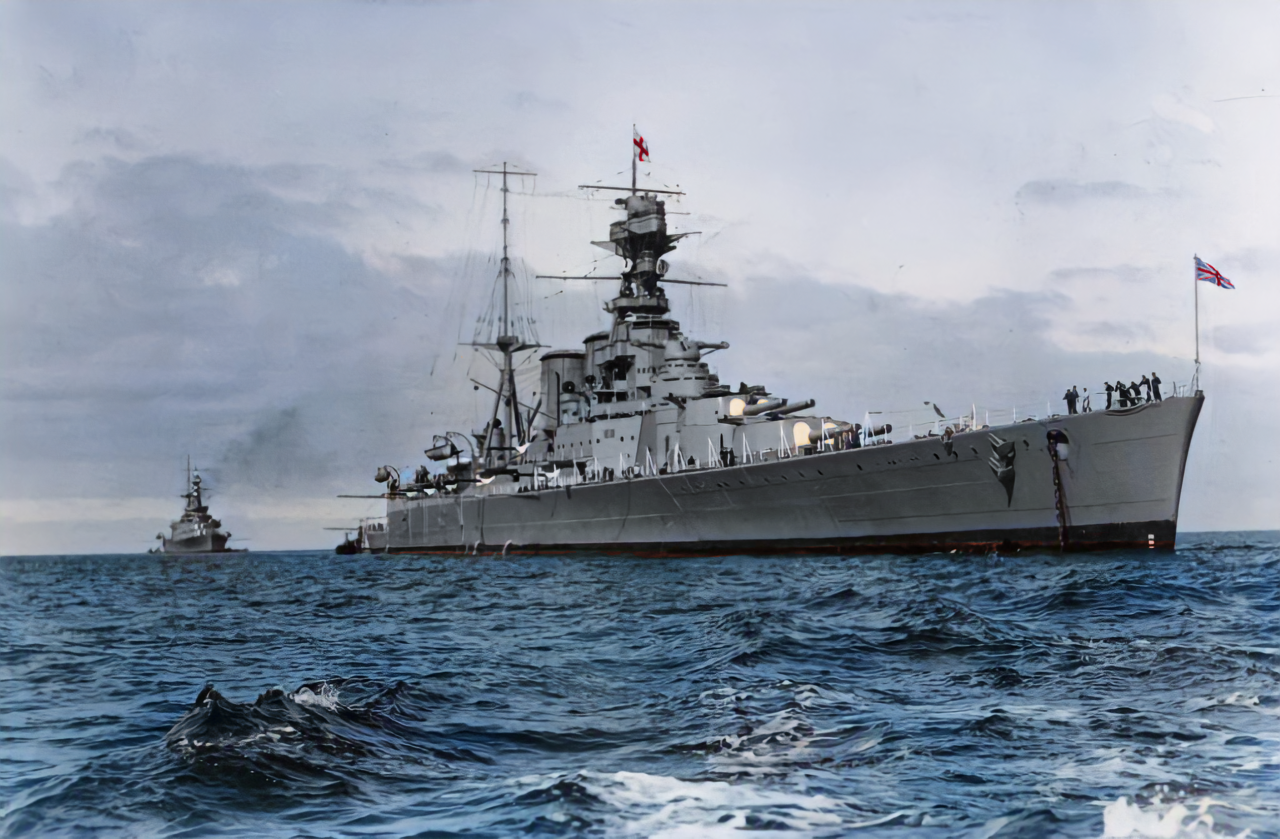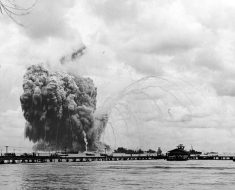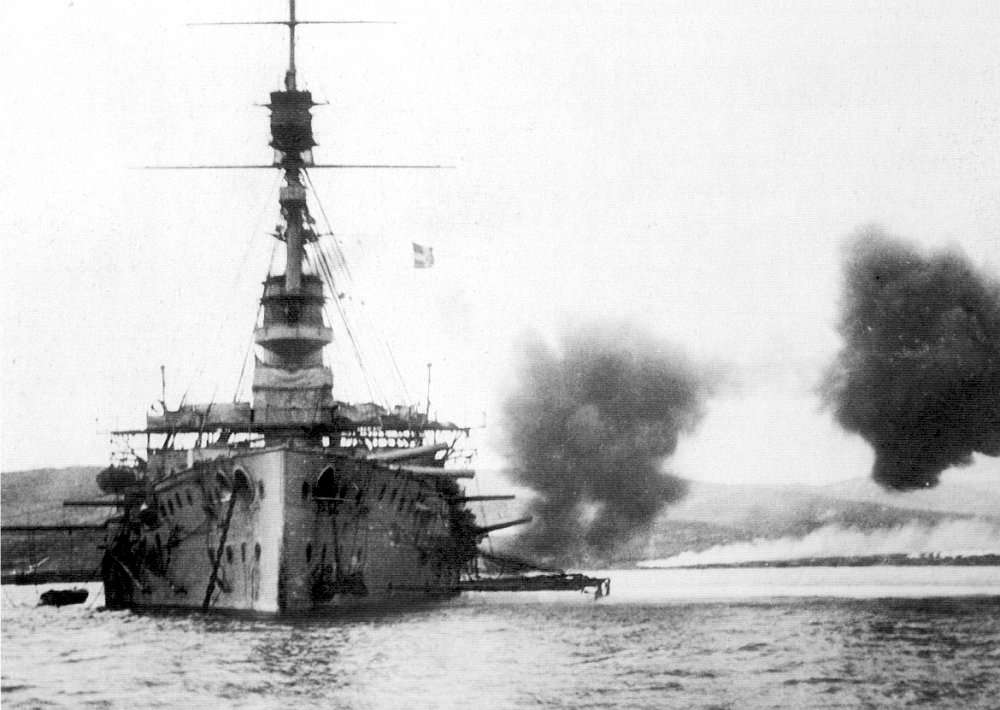HMS Hood was the only Admiral-class battlecruiser ever completed.

She was laid down in 1916 at John Brown’s yard on the Clyde, launched on 22 August 1918, and commissioned into the Royal Navy on 15 May 1920.
Concept
Designed in the aftermath of the Battle of Jutland, she was built larger and with more armour than earlier battlecruisers, though her deck protection was never fully adequate against plunging fire from long-range shells…as would be discovered!
At 860 feet in length and displacing over 46,000 tons at deep load, Hood was for two decades the largest warship afloat.

Her main armament consisted of eight 15-inch guns in four twin turrets, supported by a powerful secondary battery. She could reach speeds of more than 30 knots, giving her the ability to outpace most battleships of her day.
Before WWII
In the inter-war years, Hood became the best-known ship in the Royal Navy. She undertook the world-spanning “Empire Cruise” of 1923–24 with HMS Repulse and a cruiser squadron, showing the flag from South Africa to Australia, New Zealand, Canada, and the United States.
The tour cemented her public reputation as the “Mighty Hood”…a floating symbol of British sea power.
Despite her prestige, Hood never received the full modernisation planned for her in the 1930s. Funds and dockyard space were scarce, and the outbreak of war in 1939 meant she went to sea much as she had been built, with only partial upgrades to her equipment and anti-aircraft defences.

During the early years of the Second World War she served with the Home Fleet, patrolling the North Atlantic and covering convoys. In May 1941, Hood was ordered to join the new battleship HMS Prince of Wales in intercepting the German battleship Bismarck and the heavy cruiser Prinz Eugen, which were attempting to break into the Atlantic.
Battle
The two British ships engaged their opponents in the Denmark Strait early on 24 May 1941.
At about 06:00, after only a few minutes of battle, Hood was struck by heavy shells from Bismarck. One penetrated into her magazines, triggering a massive explosion that tore the ship apart. She sank within three minutes.

Out of a crew of around 1,418, only three survived…Ted Briggs, Bob Tilburn, and Bill Dundas.
The loss of Hood shocked Britain. She had been the most famous warship in the Royal Navy, the pride of the fleet and a symbol of British naval strength. Her sudden destruction was seen as a national tragedy, sparking an all-out pursuit of Bismarck, which was hunted down and sunk three days later.
Legacy
In 2001 the wreck of Hood was located in the Denmark Strait, lying in two main sections nearly 3,000 metres down. The wreck confirmed the scale of the magazine explosion and the catastrophic nature of her loss.

For nearly 20 years, HMS Hood was the embodiment of Royal Navy prestige…fast, powerful, and admired around the world.
Her loss was a brutal reminder of how quickly naval warfare had changed between the wars. The “Mighty Hood” remains one of the most famous and most mourned ships in British naval history.










